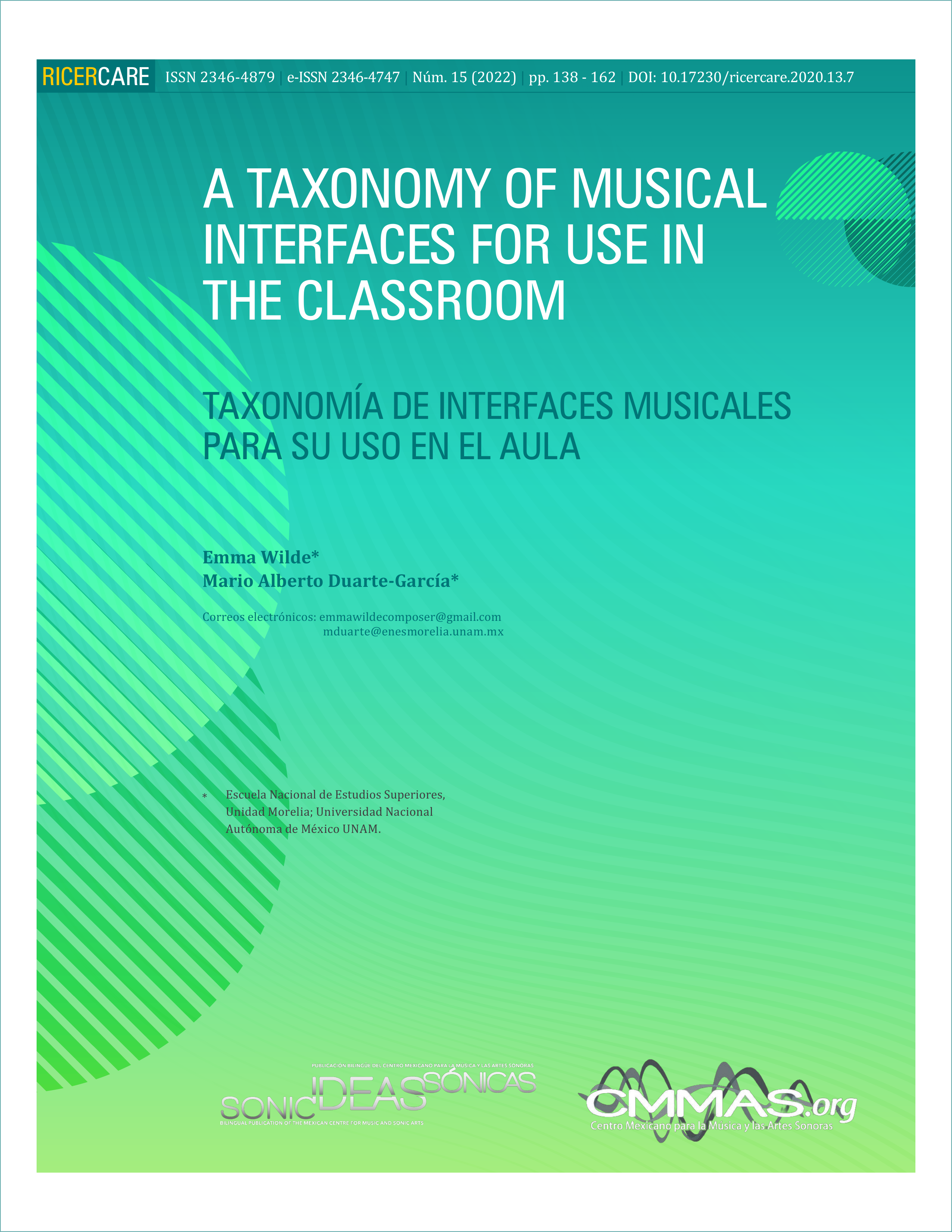A Taxonomy of Musical Interfaces for Use in the Classroom
Main Article Content
Keywords
taxonomía de instrumentos musicales digitales, pedagogía de la tecnología musical, interfaces musicales, educación musical, tecnología musical en el aula
Resumen
Las taxonomías de los instrumentos han sido una preocupación a lo largo de la historia. Sin embargo, las interfaces musicales que involucran el uso de algún mecanismo digital sonoro (para traducir datos que genera un usuario a través de la sonificación y generar un resultado sonoro) no encajan en las taxonomías tradicionales. Magnuson argumenta que es necesario determinar una clasificación sobre los principios de las interfaces musicales. Esto debido a que, una taxonomía de este tipo ofrece beneficios claros a los productores, intérpretes, musicólogos y compositores. Los autores de esta investigación proponen que los docentes también son un grupo que puede beneficiarse de una taxonomía que clasifique el uso educativo de las interfaces musicales. Diversos investigadores han argumentado que existe la necesidad para evaluar el porqué y el cómo (objetivo y metodología) esta tecnología ha sido implementada en las aulas. Existen taxonomías de interfaces musicales; no obstante, dichas taxonomías se han enfocado mayoritariamente en la clasificación del diseño e interacción del usuario y parcialmente (sin profundizar) en el campo educativo. En este artículo se muestra la taxonomía que profundiza en el ámbito educativo y se somete al análisis de 4 casos internacionales en un contexto pedagógico. Los autores muestran el uso de dicha taxonomía para clasificar el cómo y el porqué (objetivo y metodología) de su implementación en el aula y además se analizan los beneficios educativos de que esta taxonomía puede promover.

